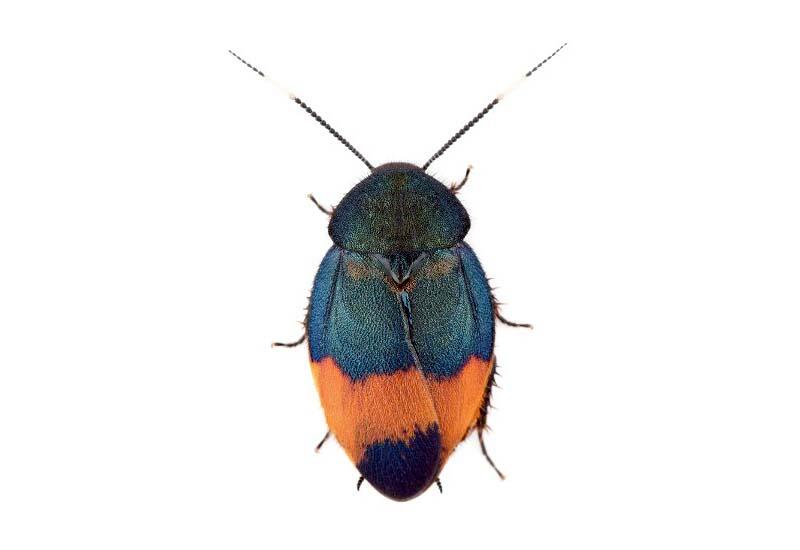On June 29, 2021, the Ministry of Environment announced that three new species of arthropods, which inhabit the Nansei Islands, namely, Scolopendra alcyona, Eucorydia donanensis, and Eucorydia miyakoensis, have been designated as "Critically Endangered Species" based on the Conservation of Endangered Species of Wild Fauna and Flora Act (Species Conservation Law). This designation regulates the capture, killing, and trading of these organisms for the next 3 years (until June 30, 2024). All three species are beautiful, and are frequently traded through practices such as online auctions, but their ecology is not well understood because they have only been found in limited habitats in the wild. Since all three species were recently published as new species, they were designated as "Critically Endangered Species" because of the possibility of serious interference in their survival due to the capture pressure caused by the attention of domestic and international collectors.
Scolopendra alcyona is a semi-aquatic centipede, which is distributed in several islands of the Nansei Islands and inhabits clear streams in suitable forests. It is the largest centipede in Japan and spans up to 19 cm in body length. It also has a body color that is turquoise (jade). It was named as a new species in a paper published in April of this year.
Eucorydia donanensis is a cockroach species belonging to the genus Eucorydia, which is distributed only on Yonaguni Island of the Nansei Islands, with a total length of 12.5-14.5 mm in males and a purple abdomen with indistinct yellow-red bands on the upper wings. It is thought to feed on rotten soil in forests, but the ecological details are unknown. This organism was named as a new species in a paper published in November of last year.
Eucorydia miyakoensis is a cockroach species belonging the genus Eucorydia, which is distributed only on Miyako-jima Island of the Nansei Islands, with a total length of 12.5-13 mm in males and a distinct orange band at the center of the upper wing. It is thought to feed on rotten soil in forests, but the ecological details of this are also unknown. The paper that named this new species was published in June of this year.
The two cockroach species were discovered by the research group of Shizuma Yanagisawa at the Ryuyo Insect Nature Observation Park, Associate Professor Yoshitaka Sakamaki at Kagoshima University, and Professor Satoshi Shimano at Hosei University. Eucorydia miyakoensis, was reported as a new species on June 17 in an online issue of the European journal Species Diversity, published by the Japanese Society of Animal Taxonomy.
In this study, the research group performed DNA analysis on 6 loci to clarify the phylogenetic relationships between the members of the genus Eucorydia that have been reported in Japan thus far. The results showed that Eucorydia miyakoensis was distinct from the three previously reported Japanese species belonging the genus Eucorydia. The Japanese native species of the genus Eucorydia all exhibit a beautiful lapis lazuli color with different patterns, but the tips of their antennae are white.
Following the discovery of Eucorydia miyakoensis, the number of native Japanese cockroach species increased to 62, but only approximately 10% of them can be found in houses. Many live far away from humans, feeding on decayed leaves in forests and caves and act as important decomposers. The Ryuyo Insect Nature Observation Park (Iwada City, Shizuoka Prefecture, Japan) currently has special exhibitions in commemoration of their new species discovery. The end date is undecided, but the exhibition began during the month of July. Dr. Yanagisawa said, "Cockroaches are not well-liked insects, so there are not many researchers working with them, but they have an important role as a decomposer. In the future, I would like to continue to investigate and research not only the genus Eucorydia but also other cockroaches in general."

(Provided by Shizuma Yanagisawa)
This article has been translated by JST with permission from The Science News Ltd.(https://sci-news.co.jp/). Unauthorized reproduction of the article and photographs is prohibited.




